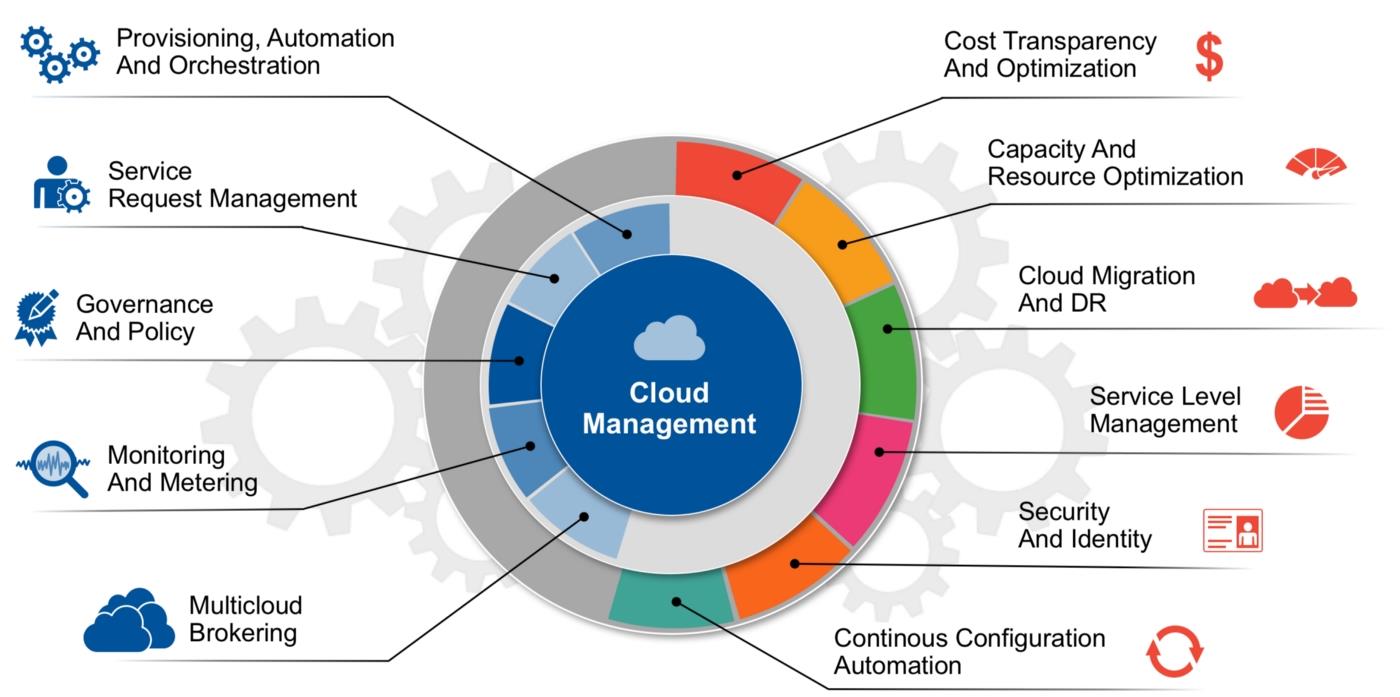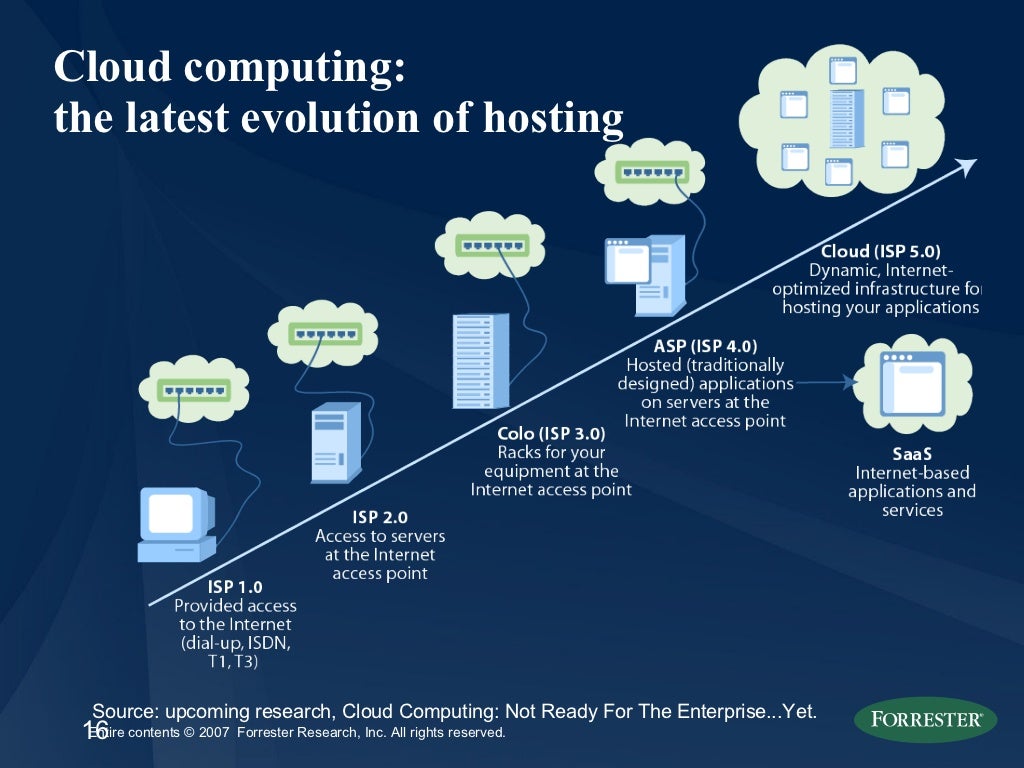Unraveling the Complexity: Understanding Integration and Synchronization
Integration and synchronization are crucial aspects of managing cloud ecosystems, ensuring seamless operations, improving efficiency, and reducing errors. Integration refers to the process of combining different software applications, services, or systems within a cloud environment, allowing them to communicate and share data effectively. Synchronization, on the other hand, ensures that data remains consistent and up-to-date across all integrated components, preventing discrepancies and potential conflicts.
In the context of cloud ecosystems, integration and synchronization are essential for achieving a cohesive and well-functioning environment. As businesses increasingly rely on multiple cloud services to support their operations, the need for effective integration and synchronization becomes paramount. By ensuring that all components work together seamlessly, organizations can streamline their workflows, enhance collaboration, and make more informed decisions based on accurate and up-to-date data.
Moreover, integration and synchronization play a vital role in addressing the challenges posed by the increasing complexity of cloud ecosystems. As the number of cloud services and applications grows, so does the risk of data inconsistencies, security vulnerabilities, and compatibility issues. By implementing robust integration and synchronization strategies, organizations can mitigate these risks, maintain control over their cloud environments, and ensure smooth and secure operations.

Key Challenges in Achieving Seamless Integration and Synchronization
Integration and synchronization in cloud ecosystems are essential for maintaining smooth operations, improving efficiency, and reducing errors. However, organizations often face several challenges when attempting to integrate and synchronize their cloud environments. Understanding these challenges is crucial for developing effective strategies to overcome them.
One of the most common challenges is data inconsistencies, which can arise when different cloud services and applications use different data formats, structures, or standards. These inconsistencies can lead to data conflicts, errors, and inaccuracies, undermining the effectiveness of the cloud ecosystem and impeding decision-making processes. To address this challenge, organizations can implement data normalization and transformation techniques, ensuring that data is consistent and compatible across all integrated components.
Security concerns are another significant challenge in cloud integration and synchronization. As cloud ecosystems become more complex, the risk of security breaches, data leaks, and unauthorized access increases. To mitigate these risks, organizations must implement robust security measures, such as encryption, access controls, and multi-factor authentication, to protect sensitive data and prevent unauthorized access.
Lack of standardization is another challenge that organizations often face when integrating and synchronizing their cloud ecosystems. With a plethora of cloud services and applications available, each with its own APIs, protocols, and data formats, achieving seamless integration and synchronization can be a daunting task. To overcome this challenge, organizations can leverage integration and synchronization tools and platforms that provide standardized interfaces and protocols, simplifying the integration process and reducing the complexity of the cloud ecosystem.
In addition to these challenges, organizations must also consider the cost and complexity of integrating and synchronizing their cloud ecosystems. Integration and synchronization projects can be time-consuming, resource-intensive, and expensive, requiring significant investment in technology, personnel, and training. To address these challenges, organizations can adopt a phased approach to integration and synchronization, prioritizing high-impact areas and gradually expanding the scope of the project over time.

Prominent Solutions for Cloud Integration and Synchronization
To achieve seamless integration and synchronization in cloud ecosystems, organizations can leverage various solutions and tools that facilitate the integration and synchronization process. These tools offer a range of features and benefits that help organizations overcome the challenges associated with cloud integration and synchronization.
One popular solution is integration platform as a service (iPaaS), which provides a cloud-based platform for integrating and synchronizing various cloud services and applications. iPaaS solutions offer pre-built connectors, APIs, and integration templates, enabling organizations to quickly and easily integrate their cloud ecosystems. Additionally, iPaaS solutions provide features such as data transformation, mapping, and mediation, ensuring that data is consistent and compatible across all integrated components.
Another prominent solution is application programming interfaces (APIs), which provide a standardized interface for integrating and synchronizing cloud services and applications. APIs enable organizations to build custom integrations and workflows, providing flexibility and control over the integration process. Additionally, APIs offer features such as authentication, authorization, and rate limiting, ensuring that integrations are secure and scalable.
Data replication and synchronization tools are also essential for achieving seamless integration and synchronization in cloud ecosystems. These tools enable organizations to replicate and synchronize data across multiple cloud services and applications, ensuring that data is consistent and up-to-date. Additionally, data replication and synchronization tools offer features such as data validation, conflict resolution, and error handling, ensuring that data is accurate and reliable.
To ensure the success of cloud integration and synchronization projects, organizations must carefully select the appropriate tools and solutions based on their specific needs and requirements. Factors such as cost, scalability, security, and ease of use should be considered when selecting integration and synchronization tools. Additionally, organizations should consider the level of support and expertise provided by the vendor, as well as the availability of training and documentation resources.

How to Implement a Successful Integration and Synchronization Strategy
Implementing a successful integration and synchronization strategy in cloud ecosystems requires careful planning, tool selection, and monitoring. By following these steps, organizations can ensure seamless integration and synchronization, improving efficiency and reducing errors.
Step 1: Planning
The first step in implementing a successful integration and synchronization strategy is planning. Organizations must identify their integration and synchronization requirements, including the cloud services and applications that need to be integrated, the data that needs to be synchronized, and the desired outcomes. This information will help organizations determine the appropriate integration and synchronization tools and solutions.
Step 2: Tool Selection
Once the integration and synchronization requirements have been identified, organizations must select the appropriate tools and solutions. Factors such as cost, scalability, security, and ease of use should be considered when selecting integration and synchronization tools. Organizations should also consider the level of support and expertise provided by the vendor, as well as the availability of training and documentation resources.
Step 3: Implementation
After selecting the appropriate tools and solutions, organizations must implement the integration and synchronization strategy. This may involve configuring and deploying integration and synchronization tools, as well as building custom integrations and workflows. Organizations should ensure that the integration and synchronization strategy is aligned with their business objectives and requirements.
Step 4: Monitoring
Once the integration and synchronization strategy has been implemented, organizations must monitor its performance. This may involve tracking key performance indicators (KPIs) such as data accuracy, synchronization frequency, and error rates. Organizations should also establish a process for addressing issues and making improvements to the integration and synchronization strategy.
By following these steps, organizations can implement a successful integration and synchronization strategy in cloud ecosystems. However, it’s important to note that integration and synchronization is an ongoing process, and organizations must continually monitor and optimize their integrated cloud ecosystems to ensure seamless operations, improve efficiency, and reduce errors.

Real-Life Success Stories: Integration and Synchronization in Action
Integration and synchronization in cloud ecosystems can provide numerous benefits, including improved efficiency, reduced errors, and enhanced collaboration. However, achieving seamless integration and synchronization can be a complex and challenging process. In this section, we will share success stories of organizations that have effectively integrated and synchronized their cloud ecosystems, focusing on the challenges they overcame and the benefits they experienced.
Case Study 1: Healthcare Provider
A healthcare provider was struggling with data inconsistencies and errors due to the use of multiple, disconnected cloud applications. By implementing an integration and synchronization solution, the healthcare provider was able to connect their cloud applications, ensuring that data was consistent and up-to-date across all applications. This resulted in improved patient care and reduced administrative burdens for healthcare professionals.
Case Study 2: E-commerce Retailer
An e-commerce retailer was facing challenges with synchronizing their inventory data across multiple sales channels. By implementing an integration and synchronization solution, the retailer was able to automate the synchronization process, ensuring that inventory data was accurate and up-to-date across all sales channels. This resulted in improved customer satisfaction and reduced stockouts and overstocks.
Case Study 3: Manufacturing Company
A manufacturing company was struggling with data silos and lack of visibility into their supply chain operations. By implementing an integration and synchronization solution, the company was able to connect their cloud applications and data sources, providing real-time visibility into supply chain operations. This resulted in improved operational efficiency and reduced lead times.
These success stories demonstrate the importance of integration and synchronization in cloud ecosystems, and the significant benefits that can be achieved through effective implementation. By overcoming challenges such as data inconsistencies, security concerns, and lack of standardization, organizations can improve their operations, reduce errors, and enhance collaboration.

Navigating Data Security and Privacy in Integrated Cloud Ecosystems
As organizations increasingly adopt cloud technologies and integrate their cloud ecosystems, data security and privacy become critical concerns. With sensitive information being shared across multiple cloud applications and services, it is essential to ensure that data is protected and compliant with regulations. In this section, we will address the importance of data security and privacy in integrated cloud ecosystems, offering best practices and tips to ensure compliance with regulations and protect sensitive information.
Understanding Data Security and Privacy in Cloud Ecosystems
Data security and privacy in cloud ecosystems involve protecting data from unauthorized access, use, disclosure, disruption, modification, or destruction. This includes ensuring compliance with regulations such as the General Data Protection Regulation (GDPR) and the Health Insurance Portability and Accountability Act (HIPAA). Organizations must also protect sensitive information, such as customer data, financial information, and intellectual property, from breaches and other security threats.
Best Practices for Data Security and Privacy
- Implement strong access controls: Organizations should implement strong access controls, such as multi-factor authentication and role-based access control, to ensure that only authorized users can access sensitive data.
- Encrypt data: Organizations should encrypt data both at rest and in transit to protect it from unauthorized access and interception.
- Regularly monitor and audit: Organizations should regularly monitor and audit their cloud ecosystems to detect and respond to security threats and ensure compliance with regulations.
- Implement data loss prevention (DLP) measures: Organizations should implement DLP measures to prevent the accidental or intentional leakage of sensitive data.
- Establish clear data policies and procedures: Organizations should establish clear data policies and procedures, including data retention and deletion policies, to ensure compliance with regulations and protect sensitive information.
Challenges and Solutions
Despite the best efforts of organizations, data security and privacy in cloud ecosystems can be challenging due to factors such as the complexity of cloud environments, the proliferation of cloud applications and services, and the evolving threat landscape. To address these challenges, organizations can consider the following solutions:
- Implementing a cloud access security broker (CASB): A CASB can help organizations enforce security policies and monitor user activity across multiple cloud applications and services.
- Adopting a zero trust security model: A zero trust security model assumes that all users and devices are untrusted and requires verification before granting access to sensitive data.
- Regularly reviewing and updating security policies and procedures: Organizations should regularly review and update their security policies and procedures to keep up with the evolving threat landscape and changing regulations.
By following best practices and implementing appropriate solutions, organizations can ensure data security and privacy in their integrated cloud ecosystems, protecting sensitive information and complying with regulations.

Smooth Operations: Mastering Integration and Synchronization in Cloud Ecosystems
Unraveling the Complexity: Understanding Integration and Synchronization
Integration and synchronization in cloud ecosystems are essential for maintaining seamless operations, improving efficiency, and reducing errors. Integration involves connecting different cloud applications and services, enabling them to share data and work together. Synchronization, on the other hand, involves ensuring that data is consistent and up-to-date across all cloud applications and services. By integrating and synchronizing their cloud ecosystems, organizations can improve operational efficiency, reduce errors, and enhance the customer experience.
Key Challenges in Achieving Seamless Integration and Synchronization
Despite the benefits of integration and synchronization in cloud ecosystems, organizations face several challenges when attempting to integrate and synchronize their cloud applications and services. These challenges include data inconsistencies, security concerns, and lack of standardization. Data inconsistencies can occur when different cloud applications and services use different data formats or when data is transferred between cloud applications and services. Security concerns include the risk of data breaches and unauthorized access to sensitive information. Lack of standardization can make it difficult to integrate and synchronize different cloud applications and services, particularly when they use different APIs or data formats.
Prominent Solutions for Cloud Integration and Synchronization
To address these challenges, organizations can use various solutions and tools that facilitate integration and synchronization in cloud ecosystems. These solutions include integration platform as a service (iPaaS), application programming interfaces (APIs), and middleware. iPaaS is a cloud-based integration platform that enables organizations to connect and integrate different cloud applications and services. APIs are interfaces that enable different applications and services to communicate with each other, while middleware is software that connects different applications and services, enabling them to share data and work together.
How to Implement a Successful Integration and Synchronization Strategy
To implement a successful integration and synchronization strategy, organizations should follow a step-by-step process that includes planning, tool selection, and monitoring. The planning phase involves identifying the cloud applications and services that need to be integrated and synchronization, defining the integration and synchronization requirements, and developing a plan for implementing the integration and synchronization strategy. The tool selection phase involves selecting the appropriate integration and synchronization tools and technologies for the organization’s cloud ecosystem. The monitoring phase involves monitoring the performance of the integrated and synchronized cloud ecosystem, identifying and addressing issues, and making adjustments as needed.
Real-Life Success Stories: Integration and Synchronization in Action
Several organizations have successfully integrated and synchronized their cloud ecosystems, realizing significant benefits. For example, a retail organization used integration and synchronization to connect its e-commerce platform, order management system, and fulfillment system, enabling it to provide a seamless customer experience and improve operational efficiency. A healthcare organization used integration and synchronization to connect its electronic health record (EHR) system, practice management system, and billing system, enabling it to improve patient care and revenue cycle management.
Navigating Data Security and Privacy in Integrated Cloud Ecosystems
Data security and privacy are critical concerns in integrated cloud ecosystems. Organizations must ensure that sensitive data is protected and compliant with regulations. To navigate data security and privacy in integrated cloud ecosystems, organizations should implement strong access controls, encrypt data, regularly monitor and audit their cloud ecosystems, implement data loss prevention measures, and establish clear data policies and procedures.
Maintaining and Optimizing Your Integrated Cloud Ecosystem
Maintaining and optimizing an integrated cloud ecosystem is essential to ensure its continued effectiveness. Organizations should monitor performance, address issues, stay up-to-date with new technologies and trends, and implement strategies for maintenance and optimization. By maintaining and optimizing their integrated cloud ecosystem, organizations can ensure that it continues to operate at an optimal level and provides value to the organization.
Future Trends: The Evolution of Integration and Synchronization in Cloud Ecosystems
The integration and synchronization landscape in cloud ecosystems is constantly evolving, with new technologies and trends emerging regularly. These trends include the increasing adoption of artificial intelligence (AI) and machine learning (ML) in integration and synchronization, the rise of low-code and no-code integration platforms, and the growing importance of event-driven architecture. By staying up-to-date with these trends, organizations can ensure that their integrated cloud ecosystem remains effective and efficient in the long term.

Future Trends: The Evolution of Integration and Synchronization in Cloud Ecosystems
Integration and synchronization in cloud ecosystems have become essential components of modern IT infrastructure, enabling organizations to streamline operations, enhance collaboration, and improve overall efficiency. As technology continues to advance, we can expect the landscape of integration and synchronization to evolve, bringing about new trends and innovations that will reshape the way businesses operate in the cloud.
One such trend is the increasing adoption of artificial intelligence (AI) and machine learning (ML) technologies in integration and synchronization solutions. AI and ML can help automate complex processes, identify patterns, and make data-driven decisions, leading to more efficient and accurate integrations. By leveraging these advanced technologies, organizations can reduce manual intervention, minimize errors, and accelerate the integration and synchronization process.
Another trend gaining traction is the rise of event-driven architecture (EDA), which enables real-time data processing and decision-making. EDA allows cloud ecosystems to respond to events or triggers, ensuring that data is always up-to-date and consistent across various applications and services. This real-time approach to integration and synchronization can significantly improve business agility, enabling organizations to adapt quickly to changing market conditions and customer needs.
Furthermore, the growth of multi-cloud and hybrid cloud environments will necessitate more sophisticated integration and synchronization solutions. As businesses continue to adopt multiple cloud platforms and on-premises systems, ensuring seamless data flow and consistency across these environments will become increasingly critical. This challenge will drive the development of advanced integration tools capable of managing complex, multi-cloud ecosystems.
Lastly, the importance of data security and privacy in integrated cloud ecosystems will continue to grow. With the increasing volume of sensitive data being stored and processed in the cloud, organizations must prioritize data protection and compliance. This focus on security will lead to the emergence of more robust and secure integration and synchronization solutions, designed to safeguard sensitive information and maintain regulatory compliance.
In conclusion, integration and synchronization in cloud ecosystems will continue to play a vital role in shaping the future of IT infrastructure. As AI, ML, EDA, multi-cloud environments, and data security concerns become more prevalent, organizations must stay informed and adapt to these trends to remain competitive. By embracing these innovations and investing in advanced integration and synchronization solutions, businesses can unlock the full potential of their cloud ecosystems and drive long-term success.

